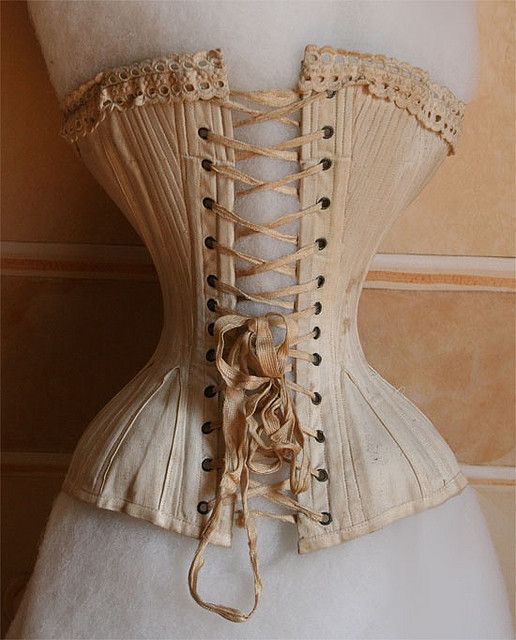If for centuries men had been similarly barbarically dragged
in a corset, like women, then they would now be the weaker sex.
Suzanne Kubelka
What modern girl doesn't want to look seductive? Women wear high heels, tight trousers and underwear that highlight all the charms of their figure. One of the most popular pieces of clothing is the corset - a beautiful and sexy element of a woman’s wardrobe that gives the body a perfect shape. It not only tightens the waist and lifts the breasts, but is also completely safe for women's health. However, this was not always the case...

@nadiapiskunofficial
The first corsets that appeared in ancient Greece were a wide leather belt that was used to wrap the ribs and stomach as tightly as possible. Women tightened it just under their breasts, thus lifting them up.
According to historical sources, the fashion for a thin waist appeared precisely in the 3rd-2nd century. BC, so girls used corsets to create seductive shapes, and men used them to achieve ideal posture.
During the development of the Gothic era, the love for art, architecture, painting, sculpture and music was revived. At that time, wearing corsets for women was almost mandatory. Not a single self-respecting lady dared to appear in society without him. But then this accessory was a metal or wooden frame, sewn into the lining of the dress and tightened with a cord in front and back. One can only guess what pain the girls felt while in these shackles.

@tr.pinterest.com
Men also wore a metal armor on their chest, although in their case it acted as protection from the sword, because duels were not uncommon at that time.
The next stage of wearing corsets occurred during the Renaissance (first half of the 16th century). At that time, women's fashion was radically influenced by the Holy Inquisition, which for many years carried out a “witch hunt” and accused beautiful, curvaceous women of heresy and witchcraft. The church required girls to wear specially shaped corsets that compressed their breasts so much that they stopped developing and did not grow. In addition, all representatives of the fair sex from the age of 13 were required to wear metal corsets with a certain lacing, the sequence of which only their husbands could know. In this way, representatives of the clergy prevented betrayal.
In Tsarist Russia, during the reign of Tsar Alexei Romanov, ill-wishers, preventing his marriage to the noblewoman Euphemia Vsevolozhskaya, tightened her corset so tightly that the girl lost consciousness right in the royal hall. She was accused of an unknown illness and, together with her family, was sent into exile, having married the prince to another. And in France, Queen Catherine de Medici set her own standard of beauty, so all court ladies had to tighten their waist to a size of 33 cm.

@pinterest.com
At the beginning of the 17th century, the fashion for shapewear evolved again. The girls began to use whalebone, which was more flexible and did not compress the body. It was covered with silk fabric that was pleasant to the touch and decorated with lace and beads. This model did not press the breasts, but, on the contrary, emphasized its fullness. Curvy shapes are back in fashion!
By the end of the same century, the corset was replaced with a thick belt, and dresses began to be made with a looser cut. The Great French Revolution, which created the First French Republic, equalized the rights of men and women. The era of corsets is completely disappearing, girls wear comfortable, loose-fitting clothes.
In the 50s of the 19th century, the world-famous French writer George Sand literally staged a revolution in the world of fashion. Fighting for women's rights, she is the first to try on a man's suit and hat, claiming that it is comfortable. Only in 1947, the world trendsetter Christian Dior again revived the era of wearing corsets in his collection. Of course, his models do not harm the female body in any way, but only emphasize its beauty and uniqueness!

@sandradolina_clother